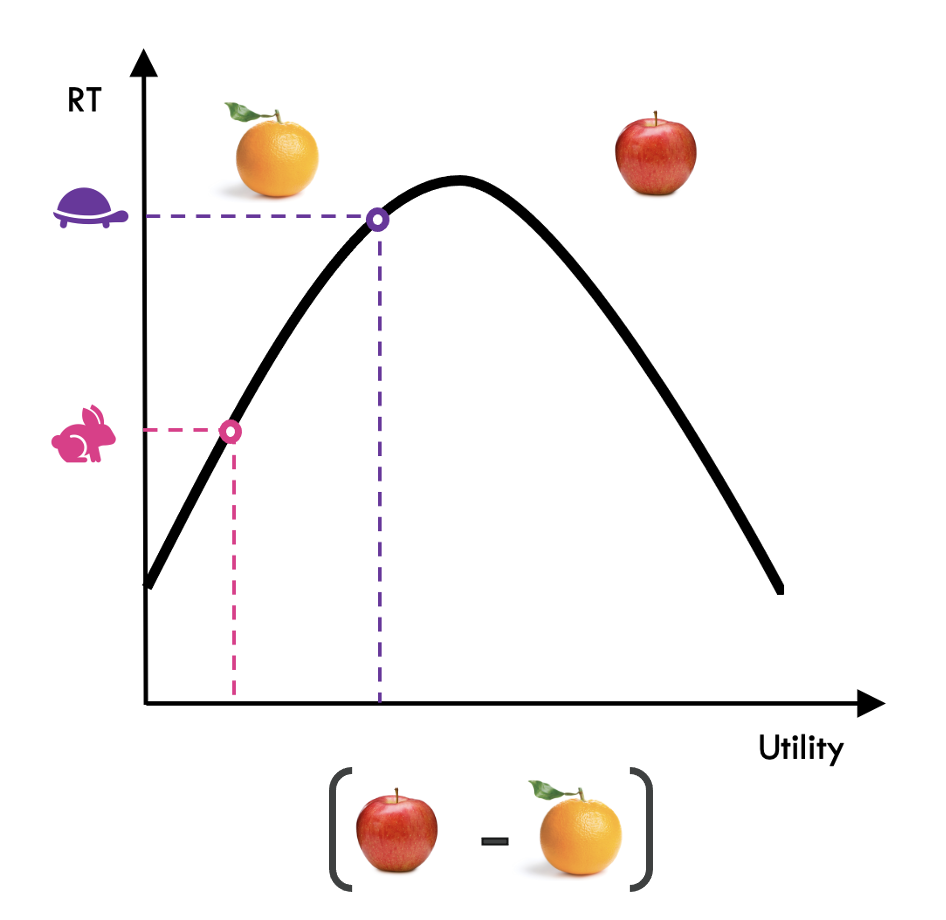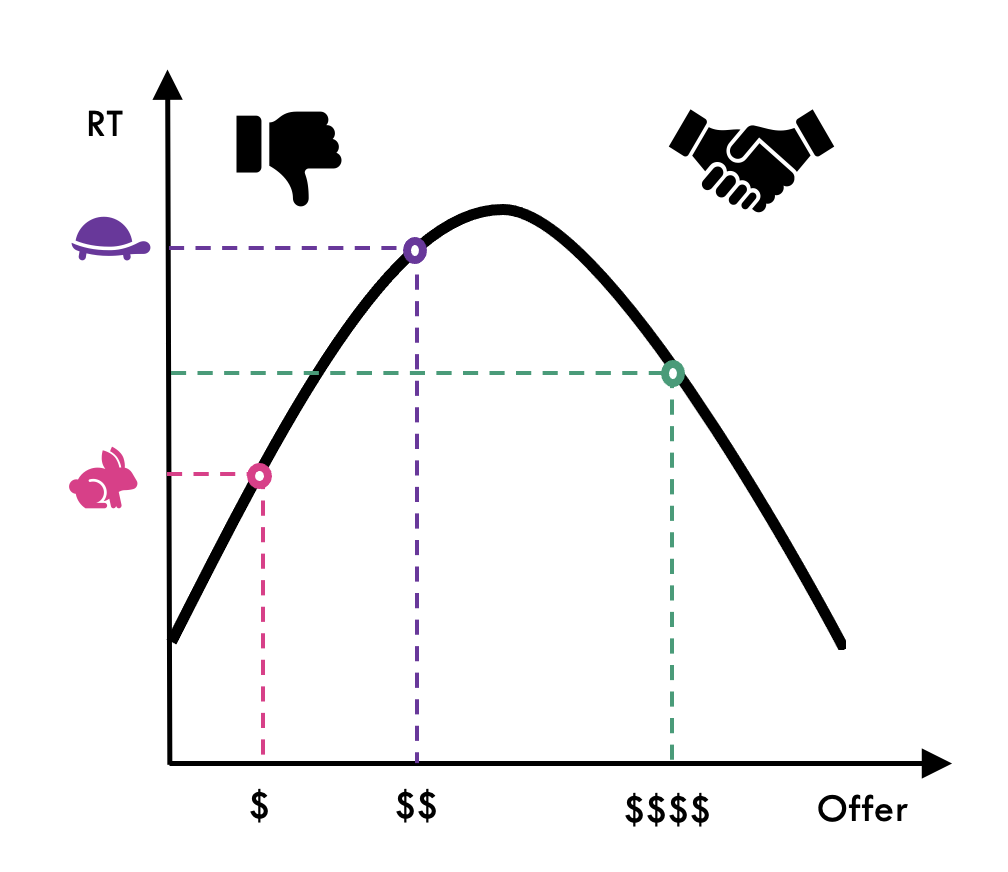How cognitive modeling can identify response biases in negotiations
Using Drift Diffusion Modeling for lab and field bargaining to study how responders strategically manipulate their response times
Collaborators: Ian Krajbich, Wenjia Joyce Zhao
Programming: R, stan
Skills: Bayesian Statistics, Model Comparison, Sequential Sampling Models, Supercomputing Resources
🔭 About
Many decisions involve a process of comparing and accumulating net evidence in favor of the choice options up to a predetermined boundary, a process which takes time and reflects the strength of the net evidence. The evidence reflects the agent’s evaluation of the choice options – an agent deciding between an apple ( 🍎 ) and an orange ( 🍊 ) must weigh the benefits and costs of the apple against those of the orange.
If these two evaluations are roughly equal ( 🍎 ~ 🍊), the agent will struggle to decide which item to choose ( 🐢 ). On the other hand, if the agent finds the orange to be much more attractive than the apple ( 🍊 > 🍎 or 🍎 > 🍊), then their choice will be quick and predictable ( 🐇 ). This relation between strength-of-preference and response time (RT) is a basic feature of evidence-accumulation or sequential-sampling models, such as the drift-diffusion model (DDM, Figure 1).

In the bargaining example, the seller must weigh the buyer’s offer against the utility of the car and/or future offers. If the seller rejects ( 👎 ) the buyer’s offer quickly ( 🐇 ), they signal to the buyer that the offer was far too low; if the seller rejects ( 👎 ) the offer slowly ( 🐢 ), they signal to the buyer that the offer was competitive.

